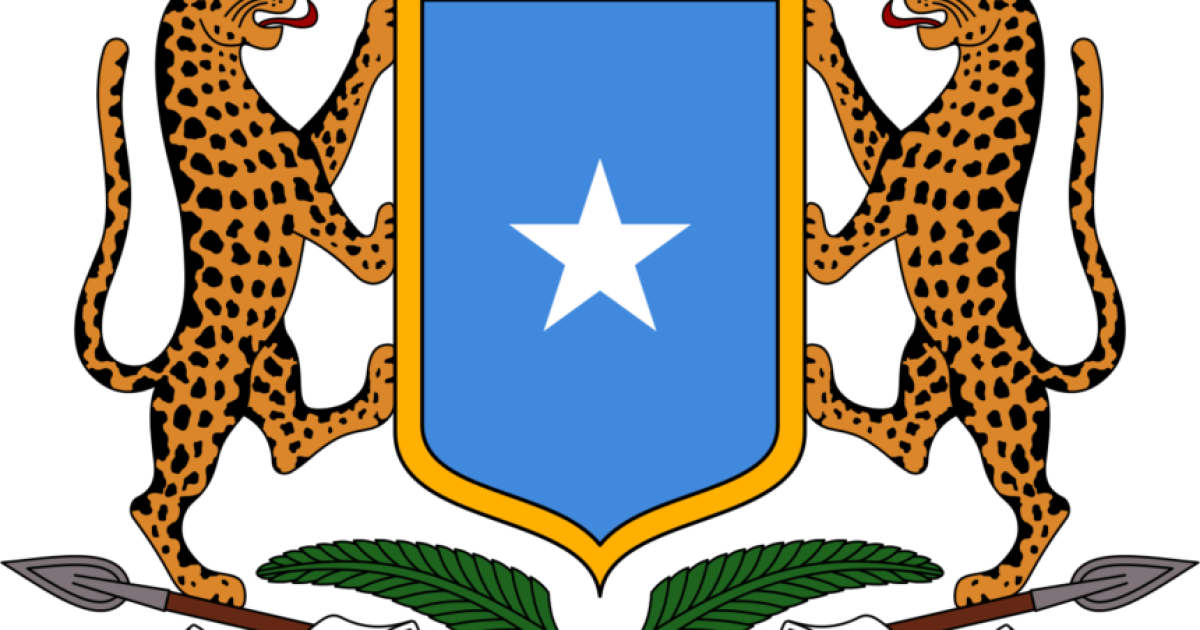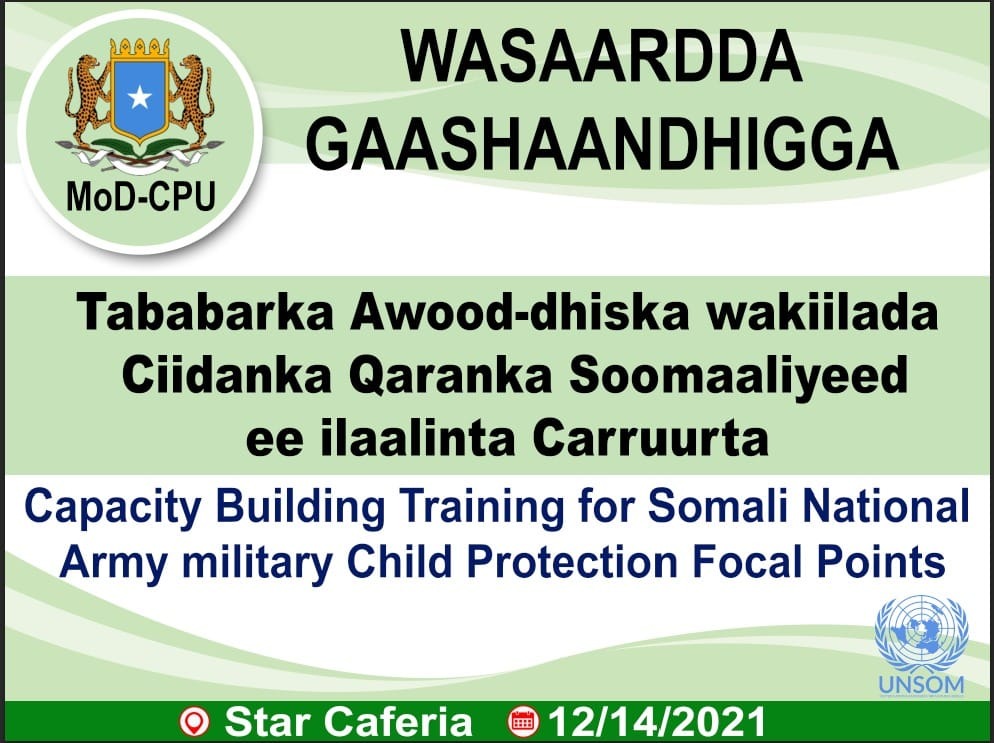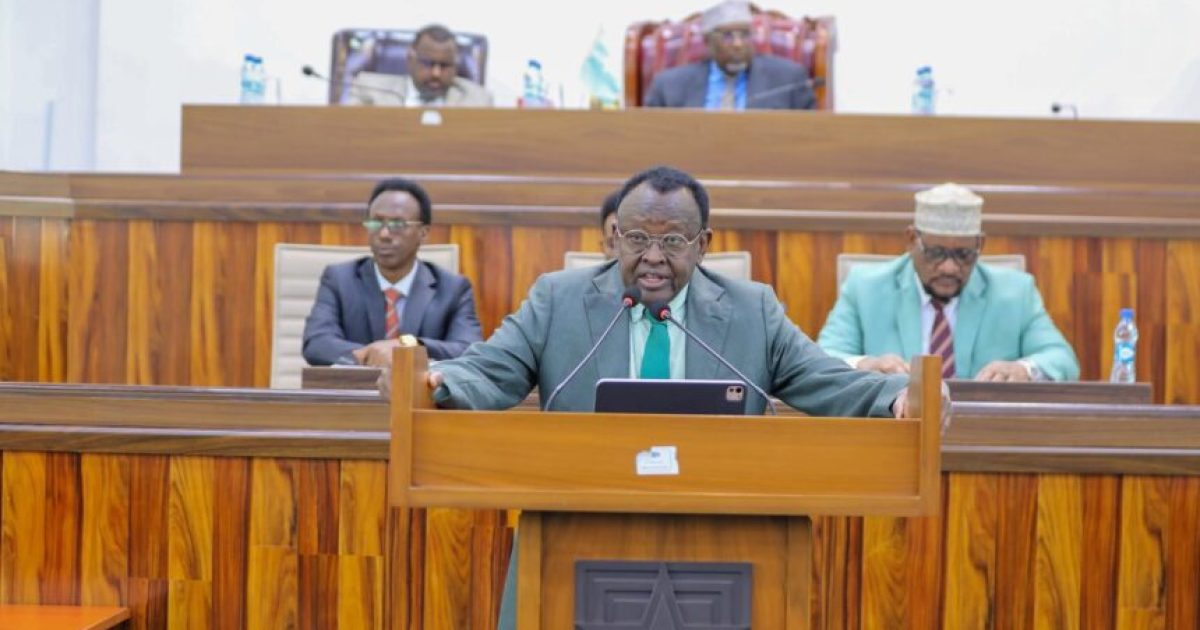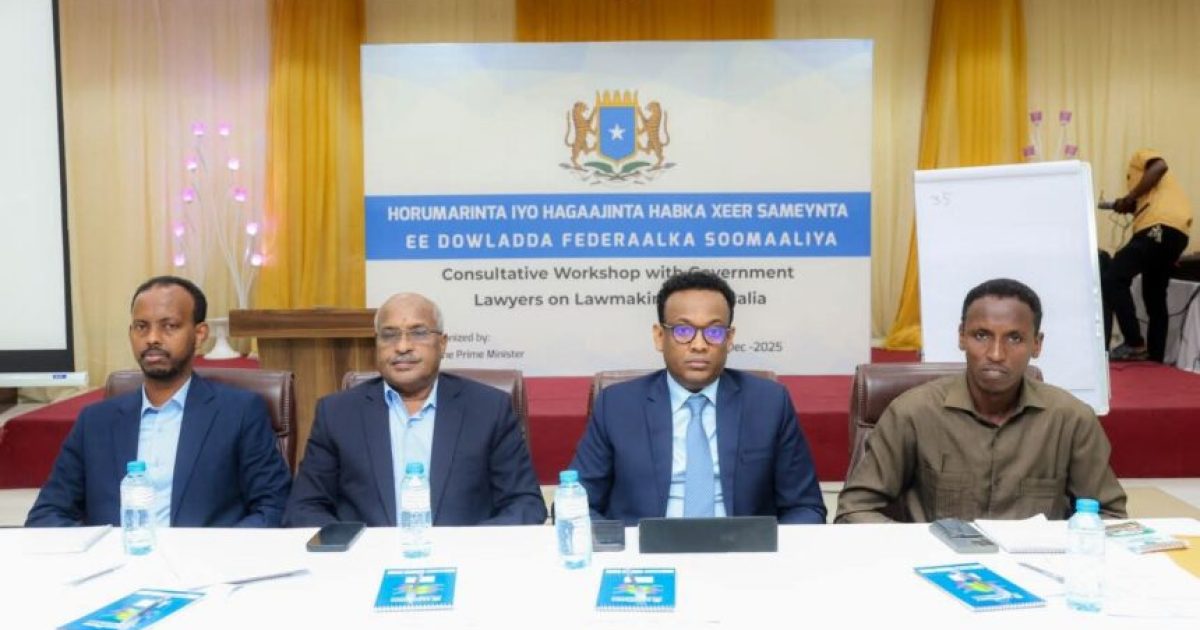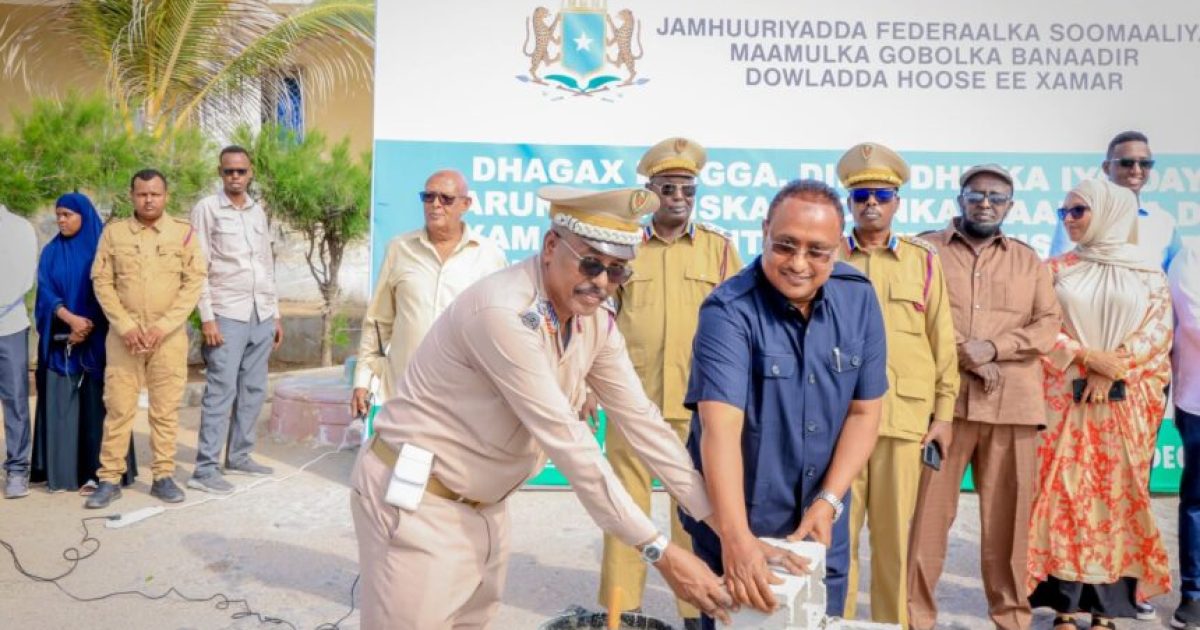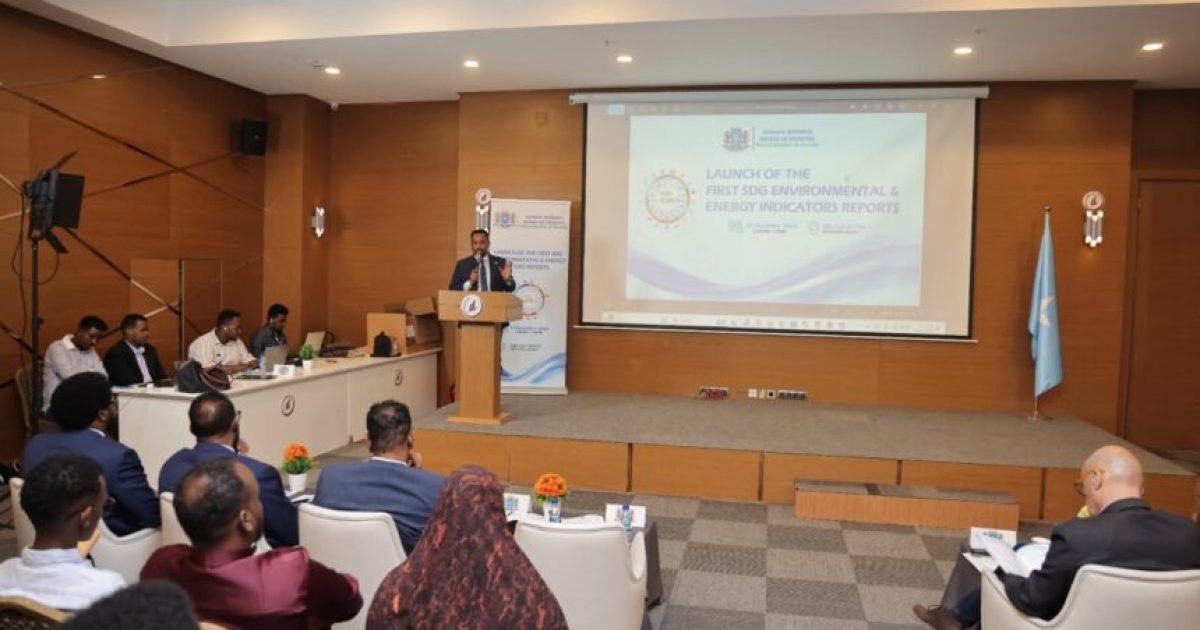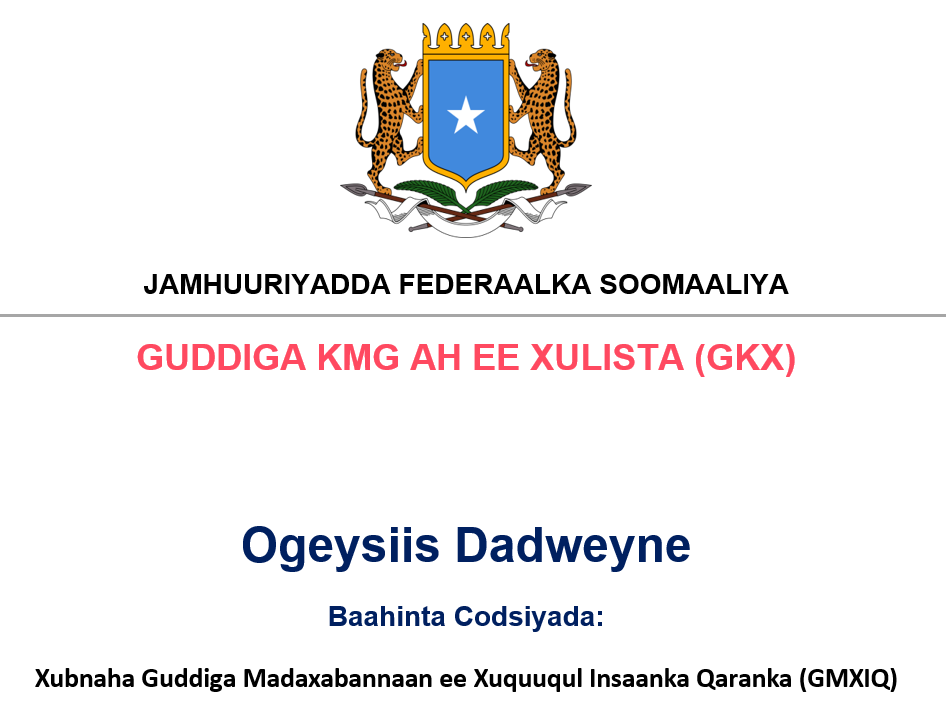A five-day training of trainers for Somali National Army (SNA) personnel and officials from the Federal Ministry of Defence, is underway in Mogadishu, to enhance their knowledge in International Humanitarian Law (IHL) and International Human Rights Law (IHRL).
The training taking place at the Palms Luxury Hotel in Mogadishu, was opened on Friday by the Special Representative of the Chairperson of the African Union Commission (SRCC) for Somalia, Ambassador Francisco Madeira, and the federal State Minister for Defence, Mohamed Ali Hagaa.
Also present was the Director-General in the Ministry of Defence, Hassan Said Samatar. The training coincided with the commemoration of the International Human Rights Day.
Organized by the Protection, Human Rights and Gender Unit of the African Union Mission in Somalia (AMISOM), the training is attended by 18 SNA trainers and commanders whose duties include military planning and execution of joint operations with AMISOM, and three civilian officials from the Ministry of Defence.
Topics to be covered include rules on the protection of victims of armed conflict, rules on conduct of hostilities, the doctrine of command responsibility in IHL, human rights law applicable to armed conflict, the relationship between IHL and IHRL, war crimes in non-international armed conflict, enforcement of IHL, the relationship between Somali Customary Rules of Warfare, Islam, IHL and IHRL, and origins and development of IHL and IHRL, and United Nations Human Rights Due Diligence Policy (HRDDP).
Addressing participants, Ambassador Madeira emphasised the need for the military personnel to acquaint themselves with IHL and IHRL to avoid human rights violations in armed conflict.
“The primary objective of this training is to boost your knowledge on IHL and IHRL, and to discuss the role of IHL and how it protects in war. As commanders and instructors of SNA, you have important responsibilities in ensuring respect for IHL during military operations, as you are criminally responsible for serious violations committed in accordance with their orders,” said Ambassador Madeira.
Ambassador Madeira added that a complete institutional understanding of matters of IHL and IHRL within the SNA can only be achieved if officers charged with training institutions continuously attain such training and share the attained knowledge.
“You have an obligation to ensure that SNA troops receive instruction of the International Humanitarian Laws governing the conduct of hostilities in Somalia. This obligation can only be realized if all SNA commanders and officers in charge of instruction in the military schools are equipped with knowledge of IHL and IHRL, and understand their obligations under the law pertaining to internal armed conflicts,” he said.
The SRCC said it was incumbent on the participants to cascade the knowledge attained down to their colleagues, so that their conduct in combat and the pursuit of the terrorist group Al-Shabaab, is done within the confines of IHL and IHRL.
He commended the SNA and the Ministry of Defence for the cordial working relationship with AMISOM, and called for even stronger collaboration in the fight against Al-Shabaab terrorists.
“We have strived over the years to develop close, friendly and constructive relations with the SNA and other branches of the Somali security forces. We need to continue to do that because we have a lot of work ahead of us,” said Ambassador Madeira.
On his part, Minister Hagaa said the SNA is growing stronger, which he attributed to existing collaboration with AMISOM. He urged participants to actively participate in the training and contribute to further growth of the army.
“The Somali military has come a long way, and it is constantly building and gaining momentum, thanks to AMISOM and the Troop-Contributing Countries that continue to help in this regard. If there is ever a need in the future for us to help any of these countries, Somalia’s troops shall sacrifice to offer that help. I advise the participants to take this training seriously so that it can be cascaded down to other personnel,” said Hagaa.
During the five days, participants will engage in interactive discussions and scenario-based exercises facilitated by the AMISOM Senior IHL/Human Rights Advisor, Dr. Omar AbdulleAlasow, and AMISOM Head of Civilian Casualty Tracking and Response Cell (CCTARC), Jones Sarfo.
According to Dr.Alasow, the training is also in fulfillment of AMISOM’s capacity building responsibility towards SNA, as guided by the Somali Transition Plan (STP) ahead of AMISOM’s envisaged exit.
“This training is a refresher to officers of Somali security forces that are in-charge of training in military schools, and commanders with a direct responsibility of operations so that they can replicate such training since AMISOM is exiting soon. As you are aware, the Somali Transition Plan puts a high priority on capacity building as AMISOM exits and transfers security responsibilities to Somali security forces,” said Dr.Alasow.
The SNA Head of Curriculum and Training Development, Lt. Mohamed Abubakar Mohamed, welcomed the training, which he described as timely.
“I have attended similar training opportunities before, but this is a good refresher course. I intend to cascade the knowledge down to the SNA officers under my command, as it helps us prioritise conducting operations in accordance with the law, especially when it comes to protecting civilians during armed conflict. Also, SNA will be taking over from AMISOM soon, so such training comes in handy,” said Lt. Mohamed.



